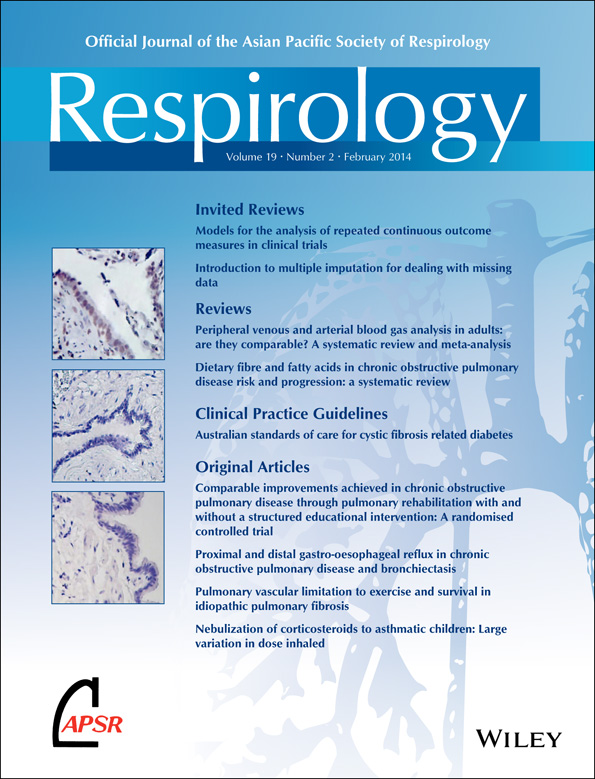Comparison of clinical characteristics and prognostic factors of combined pulmonary fibrosis and emphysema versus idiopathic pulmonary fibrosis alone
Abstract
Background and objective
The results of studies examining the outcome and the factors predicting prognosis in combined pulmonary fibrosis and emphysema (CPFE) have so far been contradictory. Our objective was to determine prognosis and the prognostic factors for CPFE.
Methods
Of 108 consecutive idiopathic pulmonary fibrosis (IPF) patients admitted to our hospital, 46 were diagnosed as having CPFE and 62 patients diagnosed as having IPF alone. We retrospectively compared the clinical features between these two groups.
Results
Annual increase in estimated systolic pulmonary arterial pressure (esPAP) was significantly greater in CPFE patients, and survival time was significantly lower. Moreover, the prognosis was unfavourable regardless of the presence of lung cancer. The multivariate Cox proportional hazard regression model showed that predictive factors were an increase in the modified Medical Research Council dyspnoea score and esPAP ≥ 30.4 mm Hg. We classified patients into the following four groups: CPFE with high esPAP (esPAP ≥ 30.4 mm Hg), CPFE with normal esPAP (esPAP < 30.4 mm Hg), IPF alone with high esPAP and IPF alone with normal esPAP. Survival in the CPFE with high esPAP group was significantly worse than that in the other three subgroups. Furthermore, CPFE with the paraseptal type of emphysema and high esPAP had the worst prognosis.
Conclusions
This study demonstrated that the prognosis of CPFE is significantly worse than that of IPF alone. In particular, CPFE with paraseptal emphysema associated with high esPAP has an extremely poor prognosis.




